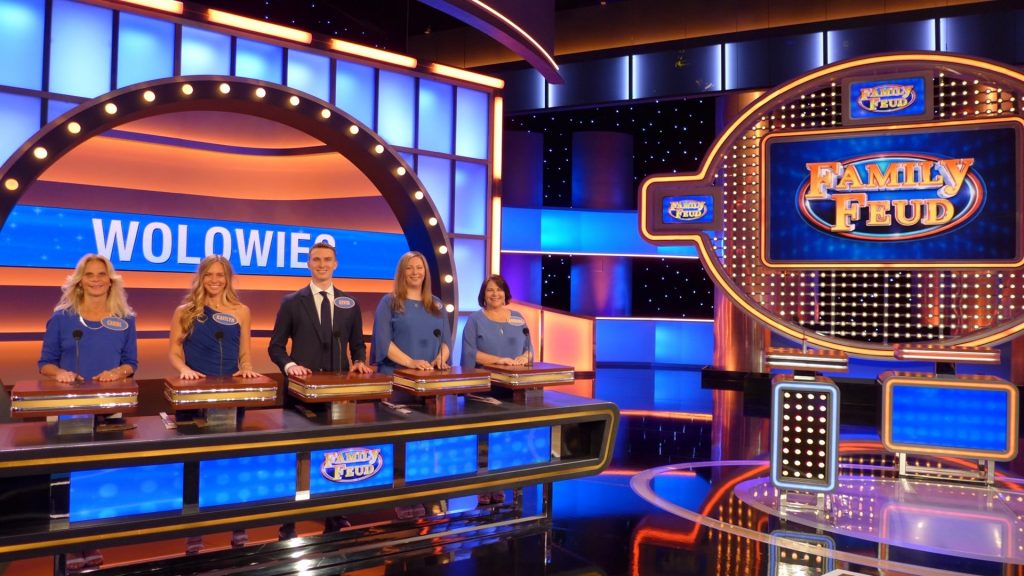justjlm.org – Since its debut in 1976, Family Feud has become a staple in American television, captivating audiences with its simple yet engaging format. The game show, created by Mark Goodson and Bill Todman, has seen various hosts over the years, but its core concept remains unchanged: two families compete against each other to name the most popular responses to survey questions posed to 100 people. The show’s blend of competition, humor, and family dynamics has made it a beloved fixture in prime time and daytime television.
The Format That Keeps Viewers Coming Back
Family Feud’s format is straightforward: each round, the host asks a survey question, and the two families take turns answering. The goal is to match the most popular answers given by the survey respondents. Points are awarded based on the frequency of the answers, and the family with the most points at the end of the round wins the right to play the “Fast Money” round for a chance at the grand prize.
The “Fast Money” round is the climax of the show, where one family member attempts to answer five questions in 20 seconds. The catch? Their answers must match those of their family member who played the first half of the round. If they succeed in matching enough answers, they can win a substantial cash prize.
The Hosts Who Have Made Their Mark
Over the years, Family Feud has been hosted by several television personalities, each bringing their own unique style to the show. Richard Dawson was the original host, known for his charismatic and sometimes controversial approach. He was followed by Ray Combs, Louie Anderson, Richard Karn, and John O’Hurley, all of whom had their own distinct hosting styles. Currently, Steve Harvey brings his comedic timing and sharp wit to the role, making him a fan favorite.
The Show’s Impact on Pop Culture
Family Feud has not only been a hit with viewers but has also left its mark on pop culture. The show’s catchphrases, such as “Survey says!” and “Good answer, no good,” have become ingrained in the American lexicon. The game show has also inspired various international versions, proving its universal appeal.
The Secret to Its Longevity
The enduring success of Family Feud can be attributed to several factors. Firstly, the show’s format is timeless, appealing to a wide range of demographics. Secondly, the emphasis on family and teamwork resonates with audiences, providing a sense of community and shared experience. Lastly, the show’s ability to adapt and evolve, whether through new hosts or updated survey questions, ensures that it remains relevant and entertaining.
Conclusion
Family Feud continues to be a cornerstone of American game shows, offering viewers a mix of competition, humor, and heartwarming family moments. As it enters its fifth decade on air, the show’s legacy is secure, with each episode reminding us why it has remained a beloved part of television history. Whether you’re a long-time fan or a newcomer to the Feud, there’s no denying the show’s enduring appeal and its place in the pantheon of great game shows.

